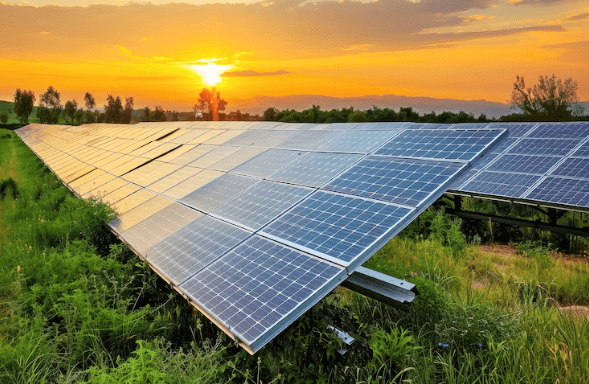Solarization has long been heralded as a key solution to Pakistan’s chronic energy woes, positioned as the magic bullet that could fix the country’s crippling power shortages. With promises of cleaner energy and a greener future, the solar revolution in Pakistan has become a fashionable mantra for policymakers, NGOs, and environmentalists alike. Yet, despite its popularity and widespread adoption, solarization could be doing more harm than good for Pakistan’s power sector, creating unintended consequences that could further damage the nation’s already fragile energy ecosystem.
While the narrative surrounding solar energy seems overwhelmingly positive on the surface, a deeper dive into the current state of the power sector reveals that this rapid shift towards solarization is not without severe pitfalls. The obsession with solar energy may be diverting crucial attention and resources from the very real, systemic problems plaguing the national grid, increasing dependency on unreliable infrastructure and exacerbating existing issues in the distribution and transmission of electricity.
Solar energy undoubtedly has a role to play in Pakistan’s energy future, but it must be approached with caution and strategic foresight. The current over-reliance on solarization risks deepening the very problems it seeks to solve, from financial mismanagement to energy insecurity. Pakistan’s power sector needs a holistic approach that prioritizes the modernization of the national grid, the integration of diverse energy sources, and the careful planning of solar energy’s role within that framework. Without these steps, the solar revolution could end up being a false dawn, doing more harm than good for Pakistan’s energy future
Pakistan’s solarization movement gained momentum over the past decade, with both the government and private sector pushing solar energy as a means to diversify energy sources and reduce dependency on fossil fuels. As a sun-rich country, the potential for solar energy is undeniable, but the problem lies in how solar energy is being integrated into the power grid. Instead of addressing the root causes of inefficiency and corruption that cripple the existing energy infrastructure, solar energy is being painted as a blanket solution to the entire power crisis.
In 2022, Pakistan announced an ambitious plan to increase its renewable energy share to 30 percent by 2030, with a substantial portion of this coming from solar energy. On paper, this looks progressive and futuristic, but in practice, the rush to solarize is proving detrimental to the overall energy mix. Solar energy, by its very nature, is intermittent; it cannot provide 24/7 power unless paired with expensive storage solutions. The national grid, already struggling with technical and financial limitations, is not prepared for the abrupt fluctuations in power generation that large-scale solarization introduces.
This uncoordinated push for solar energy is reminiscent of Pakistan’s hasty moves towards hydropower in the past. Hydroelectric projects were once touted as the ultimate solution to Pakistan’s energy deficit, yet many of those projects now suffer from environmental degradation, financial mismanagement, and a lack of long-term planning. Solarization is poised to follow a similar trajectory if strategic foresight and infrastructural preparedness do not precede it.
One of the most overlooked aspects of solarization in Pakistan is the hidden financial cost it places on the national economy. Solar energy infrastructure, while relatively cheap to install on a small scale, requires significant investment when deployed on a larger scale. The initial capital required for solar panels, inverters, and auxiliary equipment, coupled with maintenance costs, poses a substantial burden on Pakistan’s already strained fiscal resources.
Moreover, large-scale solarization often necessitates the importation of expensive solar technology, adding to Pakistan’s import bill and further exacerbating the country’s trade deficit. In recent years, the government has offered various incentives, including tax breaks and subsidies, to promote solar energy adoption. While these incentives have spurred an increase in solar installations, they have also led to fiscal leakages, placing additional strain on government finances. In an economy that is already fragile, with inflationary pressures and dwindling foreign reserves, the financial viability of these subsidies must be questioned.
The damage does not stop there. Solarization creates significant challenges for energy pricing and tariff setting. As more households and businesses adopt solar panels, they become less dependent on the national grid, leading to a reduction in the overall revenue generated by distribution companies. This decrease in revenue, combined with the high upfront cost of integrating solar energy into the grid, could result in higher electricity tariffs for those who remain connected to the national grid. Thus, solarization risks creating a two-tier system where only those who can afford the switch benefit, while the majority of Pakistanis continue to suffer from unreliable and expensive electricity.
While advocates of solarization often cite energy security as a key advantage, the reality is that over-reliance on solar power could jeopardize Pakistan’s energy security in the long term. Solar energy is inherently variable, depending on weather conditions and the time of day. This intermittency makes it unreliable as a primary energy source unless backed by expensive and advanced energy storage systems, which Pakistan lacks.
Currently, Pakistan relies heavily on imported fossil fuels for its energy needs. While solar energy may reduce this reliance to some extent, it will not eliminate it. Solar panels, inverters, and other associated technologies are not produced domestically at the scale required to support a full transition to solar energy. This creates a new kind of energy dependency— on the foreign companies and countries that manufacture these technologies. Furthermore, the degradation of solar panels over time requires replacements, further increasing dependency on imports.
Additionally, the rapid integration of solar energy into the national grid is creating operational challenges for Pakistan’s outdated transmission and distribution systems. Pakistan’s power grid was not designed to handle the fluctuating nature of solar energy, leading to increased technical losses and inefficiencies. The introduction of large amounts of intermittent solar power could destabilize the grid, leading to more frequent power outages and blackouts— a phenomenon Pakistan can ill afford given its history of energy instability.
One of the most damaging aspects of Pakistan’s focus on solar energy is the neglect of traditional energy sources and the infrastructure needed to support them. Solarization is being pursued at the expense of upgrading Pakistan’s thermal, hydroelectric, and nuclear power plants, which remain the backbone of the national grid. These plants, many of which are aging and inefficient, require urgent investment and modernization to continue providing reliable electricity.
By diverting attention and resources towards solar energy, Pakistan risks undermining the stability of its existing energy infrastructure. Instead of a balanced approach that incorporates solar energy as part of a broader energy mix, the country appears to be gambling on solarization as the primary solution. This unbalanced approach could lead to further deterioration of the energy sector, with long-term consequences for economic growth and development.
Solar energy undoubtedly has a role to play in Pakistan’s energy future, but it must be approached with caution and strategic foresight. The current over-reliance on solarization risks deepening the very problems it seeks to solve, from financial mismanagement to energy insecurity. Pakistan’s power sector needs a holistic approach that prioritizes the modernization of the national grid, the integration of diverse energy sources, and the careful planning of solar energy’s role within that framework. Without these steps, the solar revolution could end up being a false dawn, doing more harm than good for Pakistan’s energy future.





















